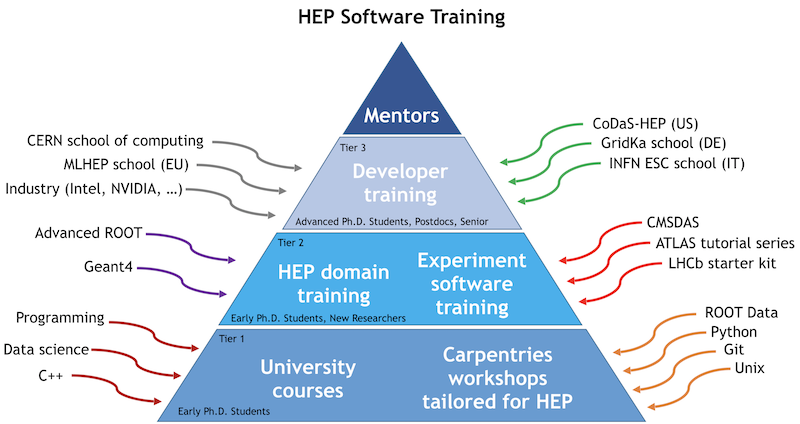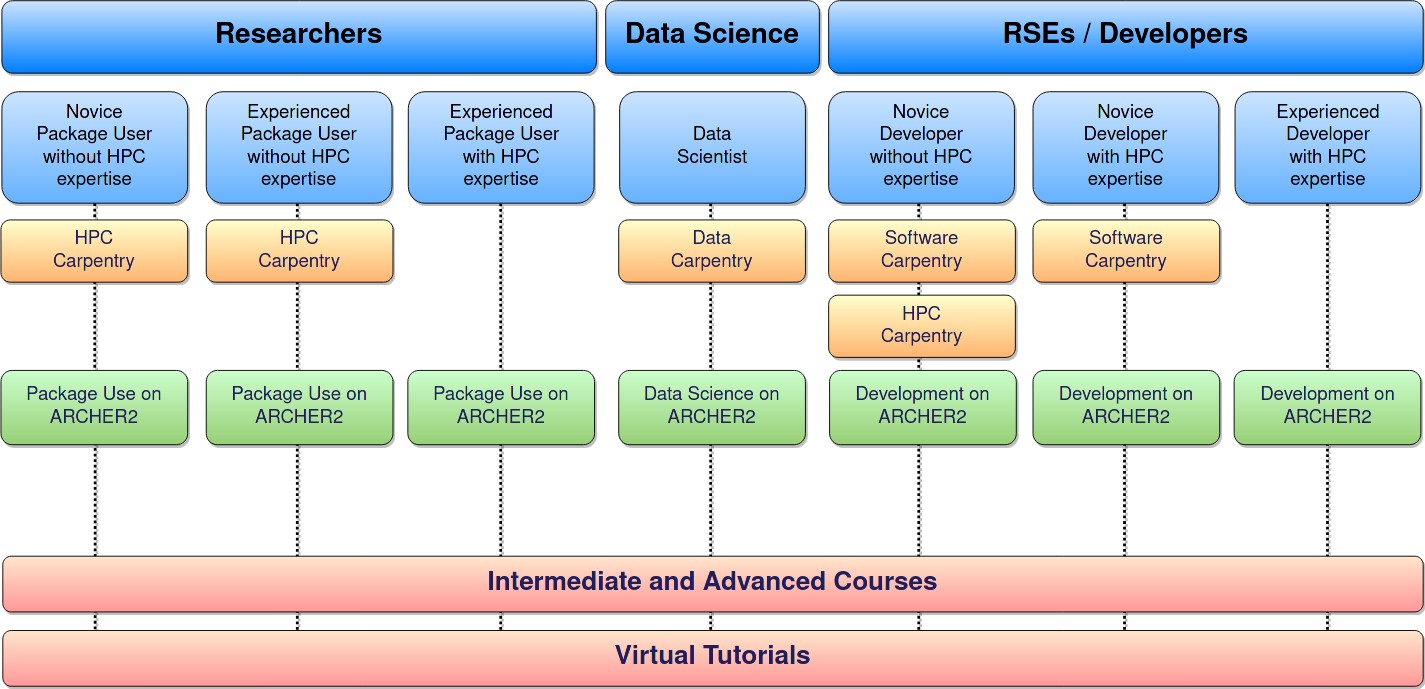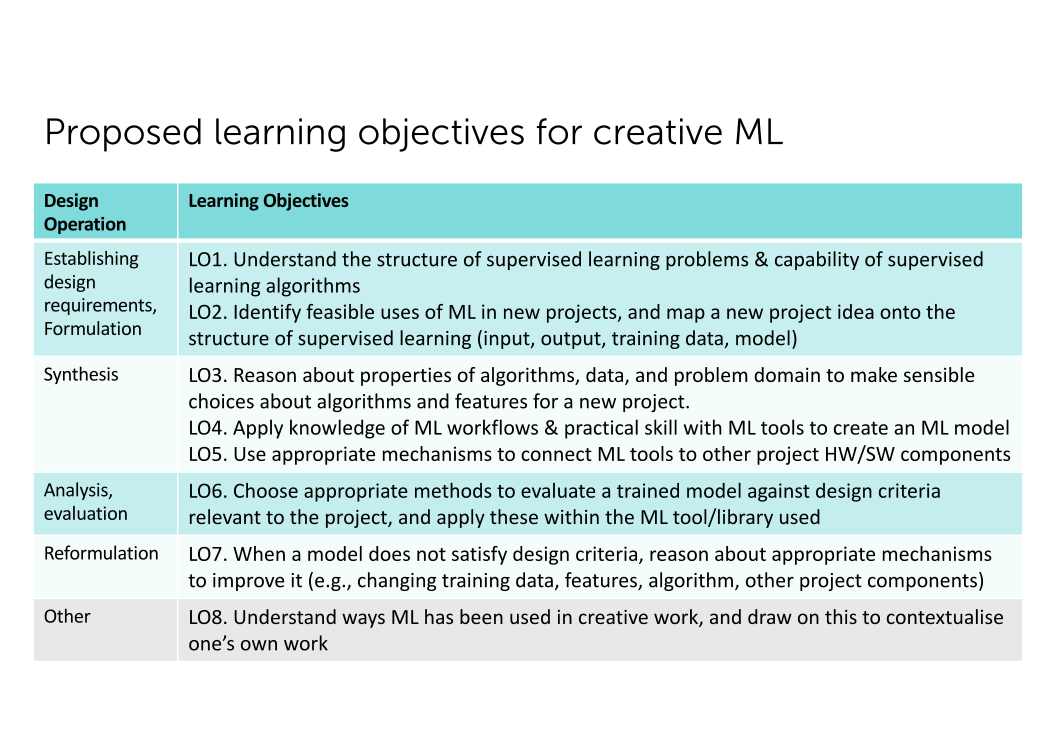Lesson Design in 30 Minutes
Peter Steinbach
(HZDR)
Nov 9, 2020
Mission Impossible

Most common approach for lesson design
Most people design lessons like this (from TeachTogether):
Someone asks you to teach something you barely know or haven’t thought about in years.
You start writing slides to explain what you know about the subject.
After 2 or 3 weeks, you make up an assignment based on what you’ve taught so far.
You repeat step 3 several times.
You stay awake into the wee hours of the morning to create a final exam and promise yourself that you’ll be more organized next time.
this presentation!
- (skipped) how learning works
- before designing lessons (ground work)
- lesson design (building the house)
- (skipped) quality control
Details and further reading: Greg Wilson, Teaching Tech Together, 2019, CRC Press
before designing lessons
there is no coding gene
Presenting a novice with a pile of facts is counter-productive because they don’t yet have a model to fit those facts into.
In fact, presenting too many facts too soon can actually reinforce the incorrect mental model they’ve cobbled together.
HPC is no exception!
how to obtain learner profiles
- learner profiles are never static (revise at regular intervals)
- get the frequencies right (more MPI jobs, more single core jobs, …)
- use pre-workshop surveys as data source
- polls are tricky to attract all users/peers
Tie Personas to Strategies

Make Strategy Actionable

learning objectives
- derived from and coupled to personas
- optional: match formal approaches in day-to-day routines
- watch out: learning objectives versus learning outcomes
- formulation of learning objectives
Bloom’s Taxonomy
Remembering: Exhibit memory of previously learned material by recalling facts, terms, basic concepts, and answers. (recognize, list, describe, name, find) Understanding:
Understanding: Demonstrate understanding of facts and ideas by organizing, comparing, translating, interpreting, giving descriptions, and stating main ideas. (interpret, summarize, paraphrase, classify, explain)
Applying: Solve new problems by applying acquired knowledge, facts, techniques and rules in a different way. (build, identify, use, plan, select)
Analyzing: Examine and break information into parts by identifying motives or causes; make inferences and find evidence to support generalizations. (compare, contrast, simplify)
Evaluating: Present and defend opinions by making judgments about information, validity of ideas, or quality of work based on a set of criteria. (check, choose, critique, prove, rate)
Creating: Compile information together in a different way by combining elements in a new pattern or proposing alternative solutions. (design, construct, improve, adapt, maximize, solve)
prequisites
- communicate prerequisites on equal importance as the expectations/content
- hard to get this right
- benefit of community development: many autonmous pairs of eyes
- approach:
- learning objectives
- prequisites
- rinse-and-repeat!
lesson design
backwards design (bottom-up, test first)
learner personas: who you are trying to help and what will appeal to them!
Brainstorm what and what not to cover: how? problems or misconceptions? (concept maps!K) can help a lot at this stage (Section 3.1).
summative assessment to define your overall goal. (final exam or capstone project)
formative assessments to practice (use for feedback to teacher and learner)
Order the formative assessments to create a course outline
Write material (1 hour = 3-5 episodes incl formative assessment)
Write a summary description
constructive alignment

constructive alignment approach
- define learning outcomes (LO)
- design teaching activities
- design assessment activites
- start over (e.g. on finer level of detail) if not at the end
constructive alignment example

backwards design and constructive alignment
- iterative approach
- assessment first
- content second
- in nature: bottom-up approach
- iterative approach
- content and assessment equally important
- encourages: top-down approach
Summary
Recap
- doing the ground work is equally important than the lesson content
(personas, objectives, prerequisites, context) - two approaches to lessons design:
- backwards design
- constructive alignment
Let’s Exercise!